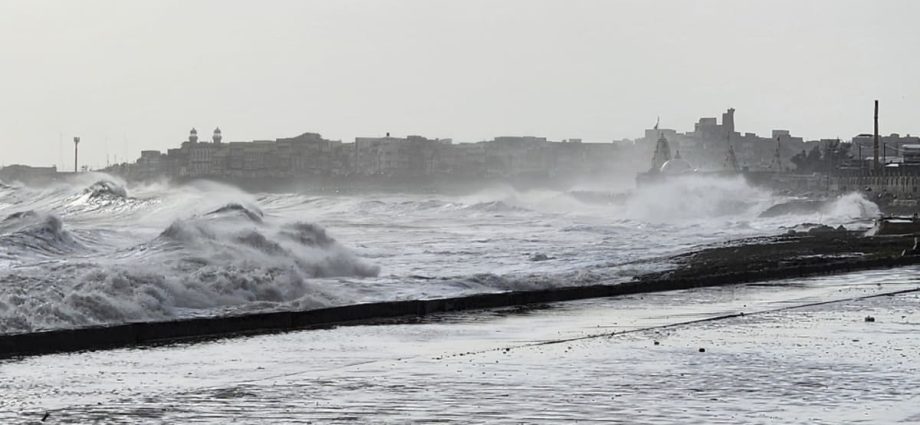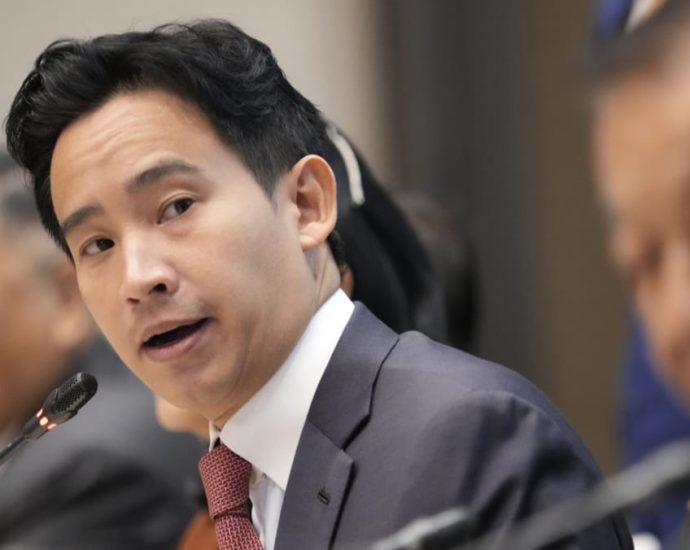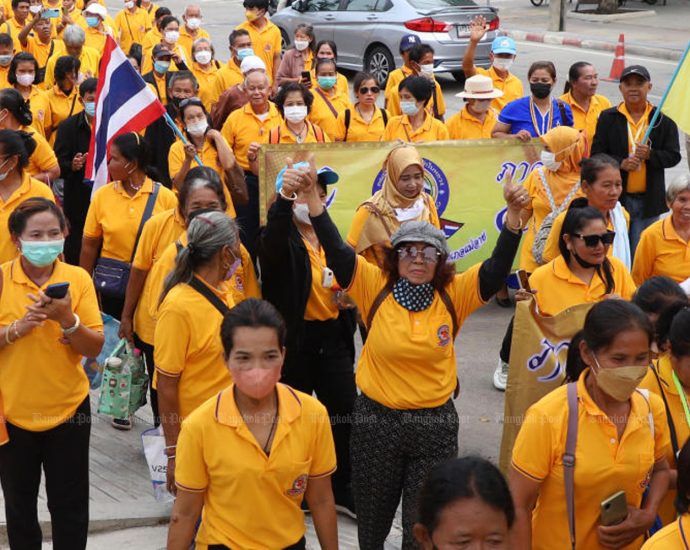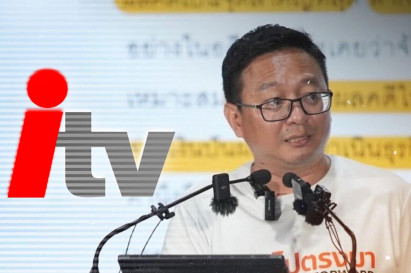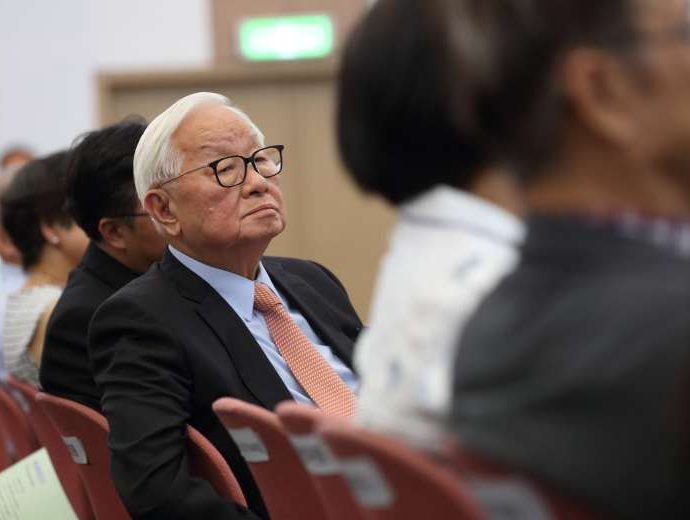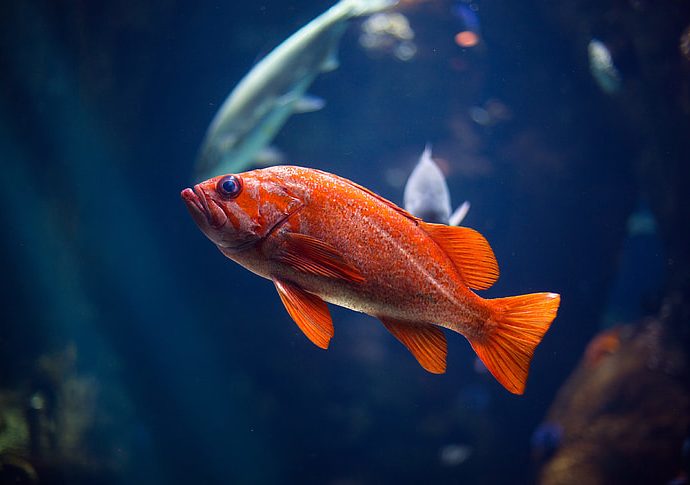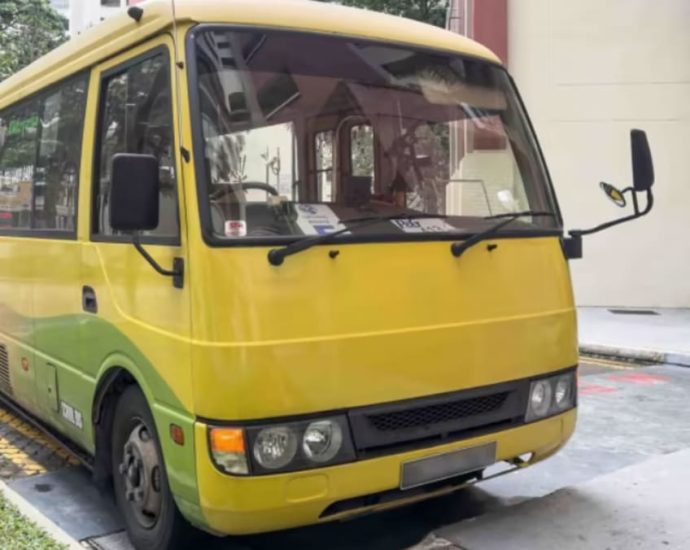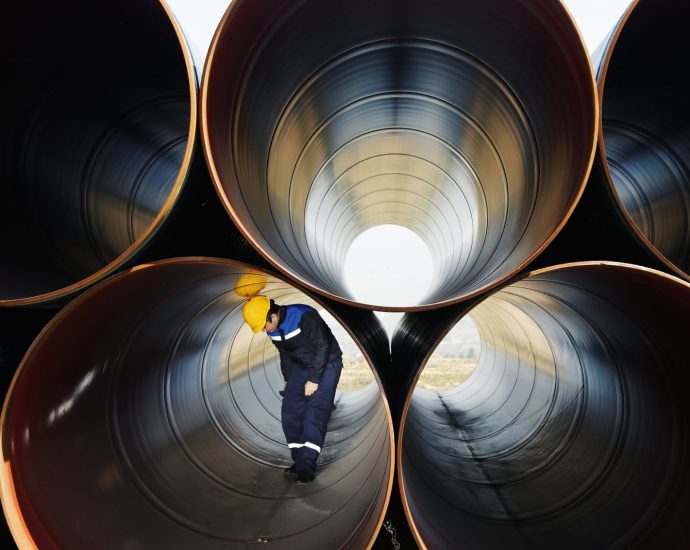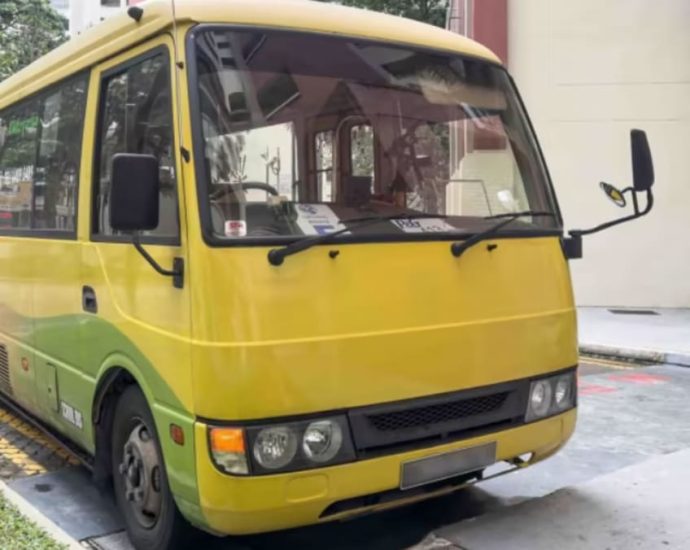India, Pakistan brace for severe cyclone, deploy rescuers to coastal regions
In Pakistan, Sherry Rehman, minister for climate change and environmental coordination, said that all relevant departments of Sindh and Balochistan provinces have been placed on high alert. Pakistan’s Civil Aviation Authority asked airport officials to immediately take steps to ensure the safety of aircraft and cargo. Biparjoy is the firstContinue Reading
Move Forward Party claims discrepancies detected in Thai PM-elect’s media share controversy
DISCREPANCIES IN ITV’S FINANCIAL STATEMENT FOUND: MFP SEC-GEN ITV officially began broadcasting in 1996. It lost the right to use the frequency for broadcasting in 2007 after the Office of the Prime Minister revoked its concession agreement. Currently, the company and the Office of the Prime Minister are involved inContinue Reading
Gun Mad: Why tourists are being advised to avoid the US
The year 2023 is on track to be the worst in recent history for mass shootings in the US, according to the Gun Violence Archive database. Some commentators are questioning whether security fears surrounding gun violence and mass shootings could keep international fans away from the 2026 FIFA World Cup in Los Angeles.
No other developed nation has mass shootings at the same scale or frequency as the US. Estimates suggest that Americans own 393 million of the 857 million civilian guns available, around 46% of the world’s civilian gun ownership.
A 2013 report by the European Commission found just 5% of EU citizens owned a gun, compared to around 32% of Americans in 2020. And the US figure is expected to have increased in response to recent shootings.
Whenever another mass shooting takes place, foreign politicians and media react with incomprehension that American gun laws differ so much from those of most other Western nations. Thirteen US states allow open carrying of a gun without a permit, and 25 (soon to be 26) don’t require a permit to wear a concealed gun in public.
Several nations have now issued their citizens with US travel warnings relating to gun violence.
Uruguay has suggested its citizens avoid certain cities, including Detroit and Baltimore. Germany warns of the possibility of killing sprees and that arms and ammunition purchases have increased significantly since the Covid-19 crisis.
Canada now recommends its citizens familiarize themselves with how to respond to an active shooter before visiting and warns of mass shootings. Australia’s official travel advice warns “gun crime is prevalent.”
Even Venezuela, ranked one of the world’s most dangerous countries, issued its highest advisory against travel to the US following mass shootings, starting from 2019.
China has also warned its citizens that they were traveling to a country with “frequent shootings.” The New York Times reported that the Chinese foreign ministry issued an advisory urging citizens to “be careful and prepare for the possibility that gun crimes may occur at workplaces, schools, at home and at tourist sites.”
In 2022, research by data analysis group Morning Consult found that a staggering 93% of Chinese nationals who wanted to visit the US were so worried about violent crime that they may not make a trip.
Tourism and violence
Journalist Rosie Spinks has questioned how America has managed to remain a “safe” country to visit, while similar incidents happening elsewhere would instantly cause countries to be locked off to international visitors.
In June 2015, a mass shooting took place in the Tunisian resort of Port El Kantaoui, killing 39 people, mostly tourists. The massacre dramatically affected Tunisia’s tourism industry and thousands lost their jobs.
For three years the UK advised against all travel to the country, with much of the world implementing similar policies. Research found that even in other Muslim countries that had no connection to the attack, their tourism industries were negatively impacted.

[embedded content]
That is not to say that governments were wrong for canceling holidays to Tunisia. Tourists’ safety should always be top priority.
Yet in the year of the Tunisia shooting, there were 372 mass shootings in the US. Meanwhile, the country welcomed a record number of overseas visitors. The difference here may be that Tunisian shootings were aimed at tourists.
Perhaps a destination’s ability to rebound after tragedy is often down not to the realities on the ground, but to our perceptions of safety. And these perceptions often come from prejudices, media bias, and governmental advice that favors certain destinations.
How do nations protect tourists?
Safety and security are vital for the tourism industry. More than any other economic activity, the success or failure of a tourism destination depends on being able to provide a safe and secure environment for visitors.
Some places opt to cocoon their tourists in enclave resorts, where they are protected in specific zones. The Egyptian resort town of Sharm El-Sheikh, for example, has been encircled by a 22-mile-long, six-meter-high wall, to protect its tourists after several violent incidents shook the Egyptian tourism industry.
Those wishing to enter the resort by road must now pass through gates equipped with cameras and scanners, while planes land directly within its walled interior.
Although these measures may seem unrealistic for the US, some areas that rely heavily on tourism have already put controls in place to protect their visitors. Loaded guns were once banned in all US national parks and wildlife reserves, until Barack Obama controversially overturned the 20-year law during his first month in office.
Walt Disney World has a strict no-gun rule in its theme park, yet reported seeing a sharp increase in people trying to enter with concealed weapons in 2021.
Gun violence in the US doesn’t seem to be going away, but global awareness and scrutiny of US gun laws and violence seems to be increasing.
Tourism is a big business in the US: in 2019 international visitors injected a staggering US$233.5 billion into the American economy. If the US hopes to maintain a positive tourism image and continue to attract visitors, it may soon have to consider how gun safety looks to the outside world.
Ross Bennett-Cook is Visiting Lecturer, School of Architecture + Cities, University of Westminster
This article is republished from The Conversation under a Creative Commons license. Read the original article.
Rally asks senators not to vote for anti-monarchist parties

About 100 people in yellow shirts gathered outside parliament on Monday and submitted a letter asking senators not to vote in support of any political party with anti-monarchist policies.
They were led by Prayoon Chitphet and came from many different provinces. They arrived in front the parliament building about 8am. They said they were gathering to show their allegiance to HM the King, and to give moral support to senators. They said the rally was apolitical and would be non-violent.
Mr Prayoon and a few core representatives were allowed to submit their letter to senators Akanit Muensawat and Taweesak Wattanapornmongkol.
In the letter, they asked senators not to vote for any political party with a policy of abolishing the monarchy. Mr Prayoon said people who loved the monarchy were ready to turn out by the millions should there be any move in that direction.
Gen Akanit told the group’s representatives he, as chairman of the senate committee on local administrative affairs, could speak on behalf of all senators in saying they would adhere firmly to their support for the nation, religion and the monarchy. He told them that senators were mature enough to make the right decisions.
Questioned later by reporters about how he thought senators would vote in the selection of the new prime minister, Gen Akanit said it was too soon to say as the Election Commission had yet to officially announce the results of the general election.
Gen Akanit said he had not been approached by a representative of the Move Forward Party to vote for Pita Limjaroenrat as prime minister. He personally knew core members of every party and was open to all opinions, the senator said.

People in yellow shirts gather in front of parliament to submit a letter asking senators not to vote for any political party with anti-monarchist policies. (Photo: Pattarapong Chatpattarasill)
MFP considering legal action over ‘altered’ iTV meeting minutes
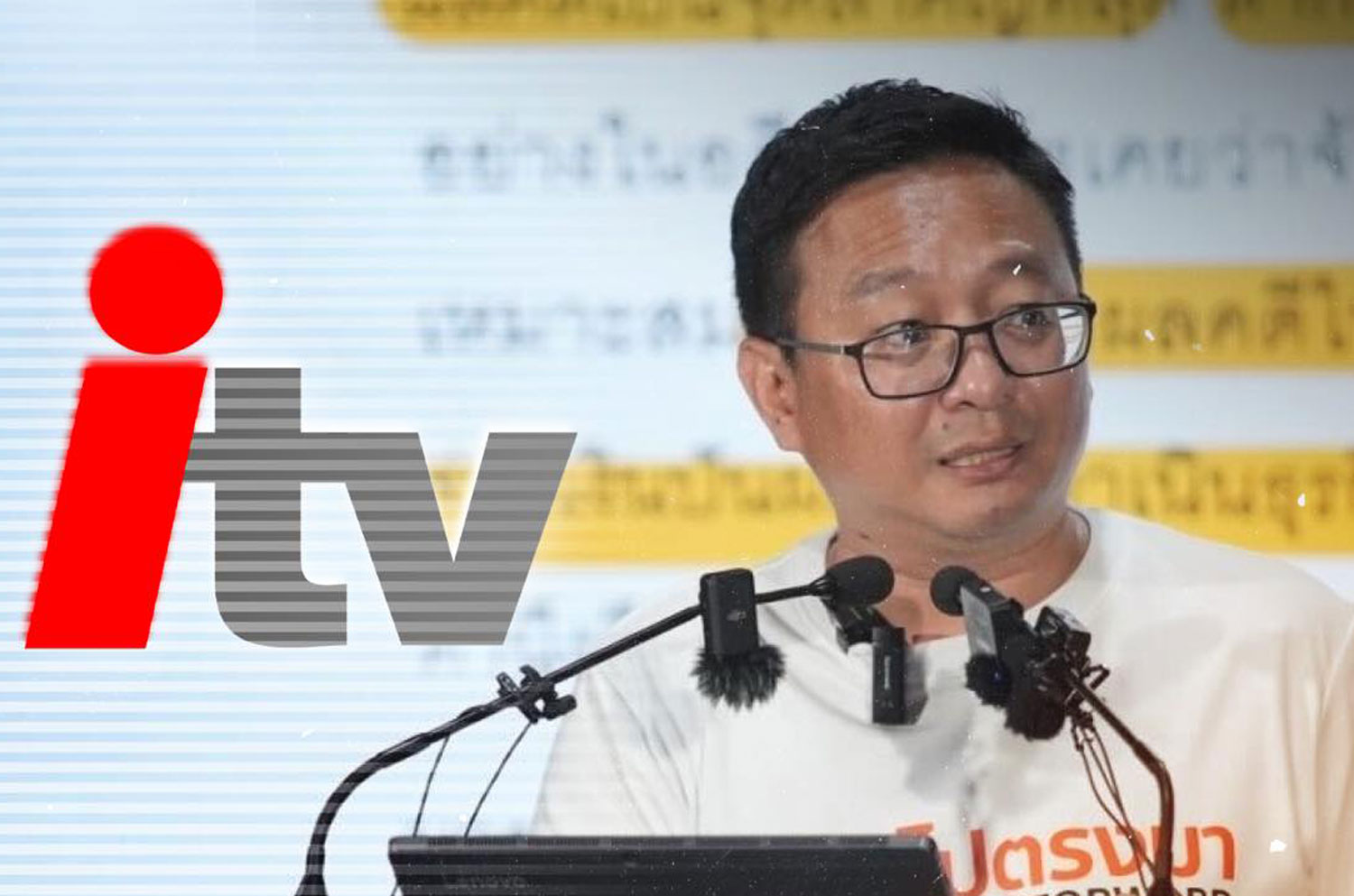
The Move Forward Party (MFP) is considering legal action against people involved in alleged attempts to revive defunct media company iTV so they can use it to prevent party leader Pita Limjaroenrat becoming prime minister.
MFP secretary-general Chaithawat Tulathon said on Monday that a video taken taken during the iTV online shareholders’ meeting in April contradicted the official minutes, providing crucial information about attempts to revive delisted iTV and portray it as an active media organisation.
Mr Pita inherited 42,000 shares in iTV from his father, but says they have all been transferred to relatives’ names and do not affect his eligibility to serve as an MP or prime minister. His political opponents disagree. If they can show iTV is an active media organisation, Mr Pita could be banned.
The video showed Mr Phanuwat Kwanyuen, a shareholder, raising the question, “Does iTV perform media tasks?’’ and Kim Siritaweechai, chairman of ITV who chaired the online meeting, answering clearly that “As of now the firm does not do anything. It has to wait for a legal case to end.”
However, the official minutes of the April 26 general meeting state that, “Currently, iTV still operates in accordance with the company’s objectives, and submitted financial statements and corporate income tax as normal”.
On May 10, political activist Ruangkrai Leekitwattana submitted the minutes as a main item of evidence in petitioning the Election Commission to investigate Mr Pita over the shares, Mr Chaithawat said. iTV was founded in the 1990s and went off air in 2007.
The MFP secretary general said that before Mr Ruangkrai petitioned the commission, Nick Saengsirinavin, a failed Bangkok election candidate of the Bhumjaithai Party, made a relevant post on his Facebook on April 24 , two days before the iTV general meeting.
Mr Nick said, “A politician who holds iTV shares is preparing to attend the annual shareholders’ meeting and he must surrender to the EC. One party leader holds 42,000 shares.”
Mr Phanuwat, a shareholder who had received shares transferred from Mr Nick and served as the manager of a clinic run by Mr Nick’s family, had subsequently ask his question at the iTV shareholders’ meeting.
“That question was raised with the purpose of getting an answer from the iTV executive that the firm still operated as a media organisation, wasn’t it?’’ the MFP secretary-general said.
Mr Chaithawat asked Mr Kim, who signed the official minutes contradicted by the video clip, and Mr Jitchart Musikabutr, a company representatives who examined and editted the minutes, to clarify the matter.
Mr Jitchart served as chief legal officer and secretary of Intouch Holdings Plc, the major shareholder of iTV, said Mr Chaithawat.
“This raises a question whether Intouch Holdings is aware of changes in the official minutes that contradict the facts at the meeting,’’ he asked.
Those issues coincided with Mr Pita’s comments earlier about attempts to revive the defunct media company as a means to attack him politically.
The party was considering taking legal action against those those involved, Mr Chaithawat said in response to reporters’ questions on Monday.
iTV submitted its financial statement to the Department of Business Development on May 10, four days before the election and the same day Mr Ruangkrai petitioned the EC, said Mr Chaithawat. In its financial statement, iTV was defined as a TV organisation.
In its 2018-2019 financial statement, iTV was defined as a holding company but in two following financial statements it was defined as a TV organisation.
The change in the financial statements also contradicted another answer given by Mr Kim during the shareholders’ meeting on April 26 when one shareholder asked whether iTV would give dividends to shareholders.
Mr Kim said in the clip that the outcome of the legal case was the most crucial point of the company. If the results were not known, it was hard to proceed with anything. Previously, the firm had hired financial consultants to study options but had not yet found a suitable outcome. It had to await for the court case to end before considering a suitable option for shareholders.
Mr Chaithawat said Mr Kin’s remarks made during the meeting showed that the executive chairman did not know that iTV operated as a television organisation and had income from advertising.
The MFP secretary-general asked why iTV’s financial statement submitted to the department on May 10 claimed income was from its television media.
I
Chip industry would implode if China invades Taiwan
A conflict between the US and China over computer chips – or semiconductors – has been escalating in recent months. In particular, the US has taken steps to limit China’s access to advanced chip technology amid heightened international competition in the area.
The US recently tightened export controls to undercut China’s access to high-end chip manufacturing equipment and has banned top talent from working for Chinese semiconductor firms. Beijing retaliated by banning US chip maker Micron from operating in China.
Taiwan plays a critical role in this struggle. It has a huge share of the global semiconductor industry, but is also the focus of tensions between Beijing and Washington over its political status.
For all practical purposes, Taiwan has been independent since 1949, but Beijing believes it should be reunited with the rest of China – possibly by force. In April 2023, China conducted extensive military drills near Taiwan, simulating an encirclement of the island.
So, what might happen to the chip industry if China were to invade?
A US act passed in 1979 requires Washington to help defend Taiwan. Providing for the island’s security also fits with wider US objectives on technology and economic security. US politicians have not minced their words in affirming that a Chinese invasion would be met with a swift military response.
A Democratic congressman from Massachusetts, Seth Moulton, recently quipped that if China invades, “We’re going to blow up TSMC” – this being the acronym for Taiwan Semiconductor Manufacturing Company, the world’s most valuable semiconductor company. Congressman Moulton later clarified that he had been discussing several options for conveying the enormous costs of invading Taiwan to Beijing.
Because of Taiwan’s dominant position in the chip industry, its economy has been described as the “most indispensable” in the world. And TSMC is the cornerstone of what’s been described as Taiwan’s “silicon shield” – the idea that an outsize global reliance on its microchips protects it from invasion by China.

Critical technology
The author Chris Miller tells the story of how Taiwan reached this dominant position in his book Chip War. It turns out to have been largely the result of strategic geopolitics and the individual leadership of several chip industry “godfathers”, including Morris Chang, the founder of TSMC.
Semiconductors are produced by a remarkably global supply chain, with design often stemming from US, Japanese or European firms, and manufacturing taking place in Taiwan and South Korea. However, Taiwan alone manufactures more than 60% of the world’s semiconductors – and crucially, 90% of the most advanced ones.
There are fears the silicon shield might not hold forever, and an invasion by China would threaten the global economy with implosion. However, if TSMC were to build new manufacturing facilities elsewhere it would reduce the world’s reliance on Taiwan for chip production.
A practice called “friendshoring” could concentrate manufacturing and the sourcing of materials outside Taiwan in countries friendly to the US. This would reduce risks to the US and its partners from an invasion.

However, such a shift would take years to complete and would be challenging to implement. In 2021, TSMC announced its plan to build a multi-billion-dollar facility in Arizona. But the plant will only be ready from 2025 at the earliest, and will probably not be capable of producing chips at what will by then be the technological frontier in terms of scale.
Generally speaking, the smaller the chip, the more transistors can fit on it. This enables the development of faster, more powerful electronic devices.
The Arizona facility is expected to produce chips at the 5 nanometer (nm) scale, and, at some stage, 3nm. This wouldn’t undermine Taiwan’s leadership, however, because TSMC is already working at 3nm in Taiwan and is likely to be further advanced by 2025.
TSMC may also face a challenge in attracting enough skilled employees to run its US operation.
The chip shortage
There is already a shortage of microchips, which began with the onset of Covid-19 in 2020 and has affected many industries and products. In 2021, global car production slumped 26% and consumer electronic product launches have been delayed largely as a result.
In a bid to boost chip supplies, the Biden administration and the EU have tried to improve supply chain resilience by incentivizing production closer to home. The 2022 CHIPS and Science Act, for instance, offers more than US$50 billion for semiconductor research and development, manufacturing and workforce development in the US.
Yet, these policies run counter to trade war tactics. Export controls and other downward pressures on global “friends” working with Chinese firms have meant that even when TSMC is at capacity, additional supply cannot come from Chinese manufacturers. Under current chip war conditions, low supply is likely to continue, which means price increases and product delays.
The military response to an invasion of Taiwan could see manufacturing of semiconductors on the island halted overnight. This would place marked pressure on the price of the chips manufactured outside Taiwan. The increase in chip prices would unleash massive inflation on a range of products and services, including cars, phones and healthcare equipment such as ultrasounds and vital sign monitors.
The reduction in semiconductor supply would also affect the very national security context that is shaping the contours of its production. A Taiwanese invasion would mean a halt to the availability of the advanced chips used in satellites, stealth jets, and supercomputers. China’s ambition of having a “fully modern” military by 2027, and its Made in China 2025 plan, to boost manufacturing, both hold semiconductor capabilities at the core.
Having access to TSMC know-how and supplies would be pivotal for delivering on these goals. But the US commitment to defending Taiwan – if it holds – would mean the destruction of TSMC facilities on the island. The world’s cutting-edge facilities for advanced chips would be decimated.
We should all care about a Chinese invasion of Taiwan. The global semiconductor industry would freeze. Inflation would spiral further upwards and the post-Covid recovery would be reversed. So many of the tools we rely on would disappear from our shops for years. It would wreak enormous damage on us all — with the Taiwanese people bearing the greatest cost.
Robyn Klingler-Vidra, Associate Dean, Global Engagement | Associate Professor in Entrepreneurship and Sustainability, King’s College London
This article is republished from The Conversation under a Creative Commons license. Read the original article.
Swimming with ‘monsters’: Behind the search for the worldâs largest freshwater fish
Freeing fish isn’t as easy as it sounds, especially if it takes four people to carry some of them.
Tagging and releasing critically-endangered fish across the Mekong River basin is now second nature to Zeb Hogan, a biologist and an associate research professor at the University of Nevada, Reno.
Since 2009, Hogan’s search for the largest fish in the world has been documented in his National Geographic show Monster Fish. Hosting the show, now in its seventh season with more than 40 episodes, has taken Hogan to rivers and lakes in more than 30 countries across six continents.
One of the show’s first episodes focused on the Mekong giant catfish.
Hogan was later selected to lead the research and conservation project, Wonders of the Mekong, which is funded by the U.S. Agency for International Development.
Freshwater conservation has been at the core of his work since Hogan’s college days. With that passion came a quarter-of-a-century long quest captured in his recently published book Chasing Giants: In Search of the World’s Largest Freshwater Fish.
Co-authored with environmental journalist and National Geographic contributor Stefan Lovgren, Chasing Giants follows Hogan’s global search for these “megafish”. Hogan spoke with Southeast Asia Globe about his hopes and fears for these rare species that call the Mekong home.
What first brought your attention to the Mekong River?
I saw an advertisement on a bulletin board at the University of Arizona that highlighted a Fulbright programme on environmental risk assessment at Chiang Mai University in northern Thailand, which sparked my interest because I had been studying the impact of dams on the Colorado River.
As an undergraduate, I had been studying how hydropower can have catastrophic impacts on fish population and radically change river environments. At that time there were large dams proposed for the Mekong River, where many of the fish are migratory and people were incredibly dependent on fish. It was clear to me those dams were going to have an impact not only on fish but on people and nutrition and livelihood. So I submitted a proposal to the program.
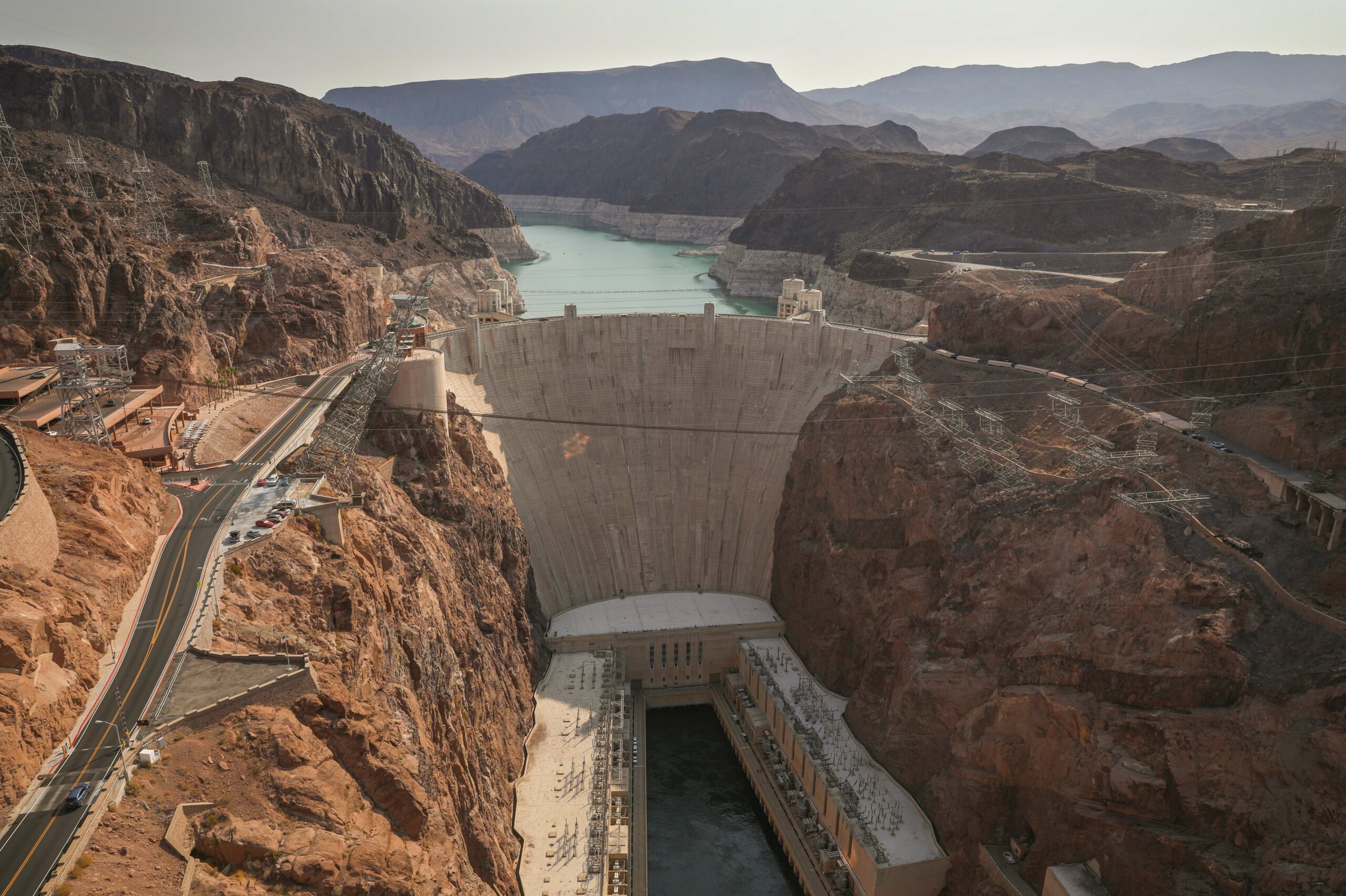
The critically-endangered Mekong giant catfish is a key character of your new book. What is the significance of the species?
The Mekong giant catfish is symbolic to the overall health of the Mekong River. It is only found in the Mekong and is one of the river’s largest and most iconic fish species. The giant catfish is highly migratory and is shared between the four countries of the lower Mekong basin.
It is absolutely symbolic of river health and emblematic of the debate on Mekong management and the fate of the river itself.
In Chapter Five – titled with the question ‘Monsters?’ – you write that “megafishes are not what most of us would describe as pretty” and tease at the fact you are constantly told these fish are ugly. Does that impact interest in their conservation?
It does make a difference. There is a reason why a panda is [the World Wildlife Fund] logo and not a giant catfish. However, it goes beyond aesthetics. Many people view these fish as food, which they can be, but when they reach critically endangered status we need to start looking for conservation measures rather than recipes.
Believe it or not, we are getting there. I see it with kids. I speak to classes all the time and I have noticed that kids get just as excited about these megafish as they do with pandas and tigers. That excitement in children is potential for adults. I have been told these fish are ugly many times but I see people beginning to get past that.
The example I write about in the book is sharks. [The 1975 film] Jaws came out when I was a young boy and everyone was terrified of sharks, I was too. We have moved past that fear, it has shifted to a fascination with sharks. The three largest species of sharks are now protected and I believe that shift will also occur with these freshwater fish. If we have the time, many of them are close to extinction already.
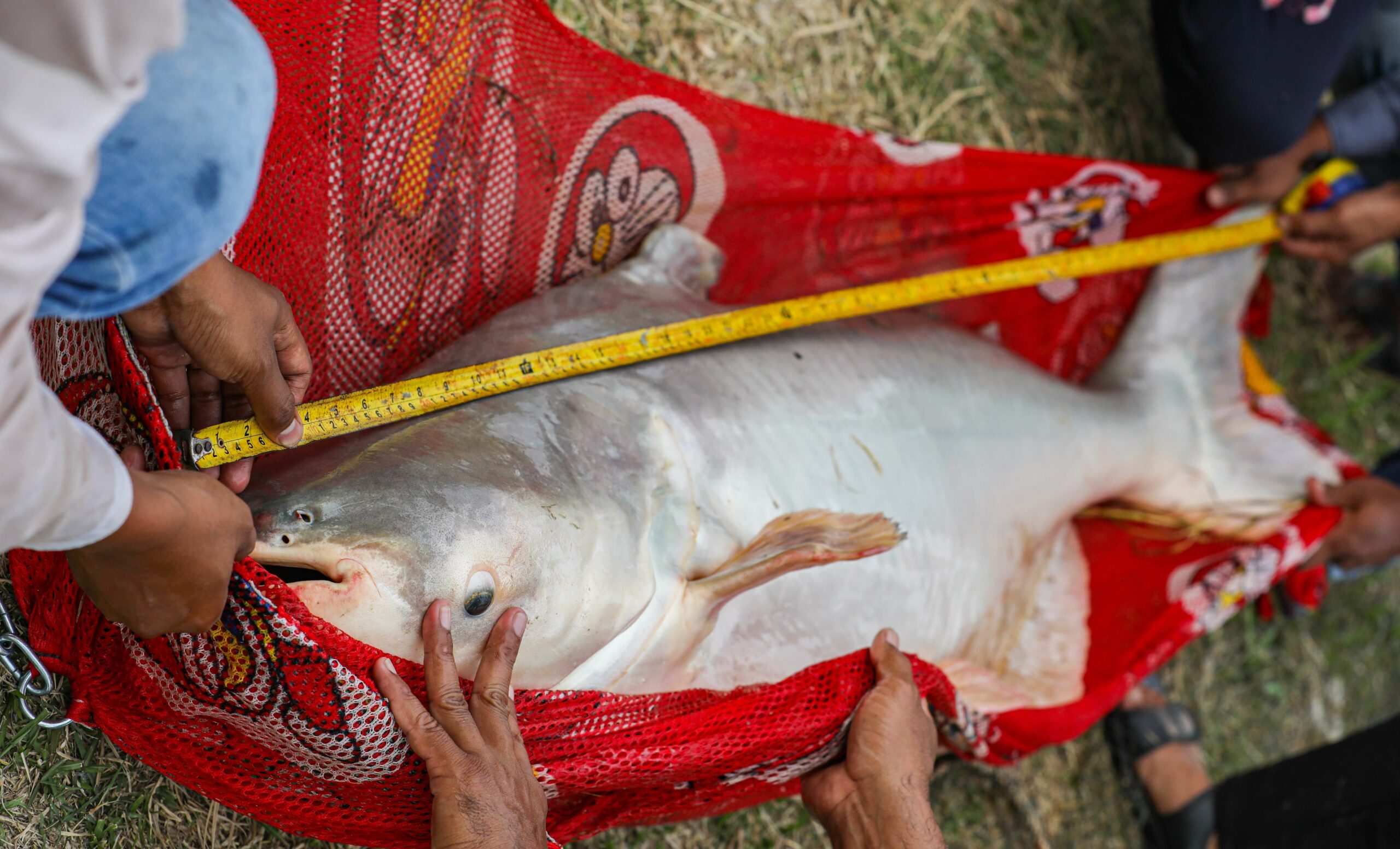
The book’s central question is pinning down the world’s largest freshwater fish. On your search to see if the Mekong giant catfish could hold that title you wrote that Cambodia was “the best place to find answers”. Why is that?
Cambodia is the epicentre for fisheries diversity and fish production in the Mekong basin. You have a river system that is home to more species of big fish than anywhere in the world and Cambodia is the core area in the Mekong region. The country is the most important area in the most important river basin for this species.
A fear you wrote about in your book is that “biodiversity conservation in the Mekong would forever play second fiddle to competing with far better funded interests like hydropower.”
Later, you explain how the U.S. government has stepped in to fund a lot of your current research through the Wonders of the Mekong project. Has that had any impact on how people or governments perceive your work?
It hasn’t negatively impacted the project and I don’t think it has negatively impacted its effectiveness. We make our intentions pretty clear with our work.
My work has been very positively received partially because the focus of Wonders of the Mekong is to understand and highlight the many values of a healthy Mekong River. When it is phrased that way, that is an idea that everyone can support. Everyone knows the project is funded by the U.S. government.
To my knowledge, we have avoided controversy by focusing on the science. We are not pushing a political narrative, we are working with our Cambodian partners to understand what is happening in the Mekong and to highlight the values of a healthy river.

What is a takeaway you have had in the process of creating this book?
One of the things I have learned researching and travelling around the world in the process of writing this book is that, almost without exception, the only places these big fish are doing well are where people know about them and have taken it upon themselves to protect them.
We look for bright spots. We look for solutions. That is one of the driving forces behind the book. Without people knowing about these fish, and caring about them and taking action to protect them, many of these species will go extinct.
The reason I wrote the book is because I want to tell the story of the world’s largest freshwater fish and the rivers where they occur. It is a story that connects all of us to rivers and lakes and the freshwater that we depend on to survive. It is the story of extraordinary animals that many people don’t even know exist and need our help for survival.
And if those “bright spots” you have searched for go out?
It is a bleak world. We lose all of these extraordinary animals that make our world special. We lose fisheries that we depend on for food. We lose healthy rivers and clean water that we depend on for survival.
Nobody wants to go to the place without bright spots. We want more bright spots, not less. A world where we have lost all of our bright spots is an unhealthy, less interesting world that we don’t want to live in.
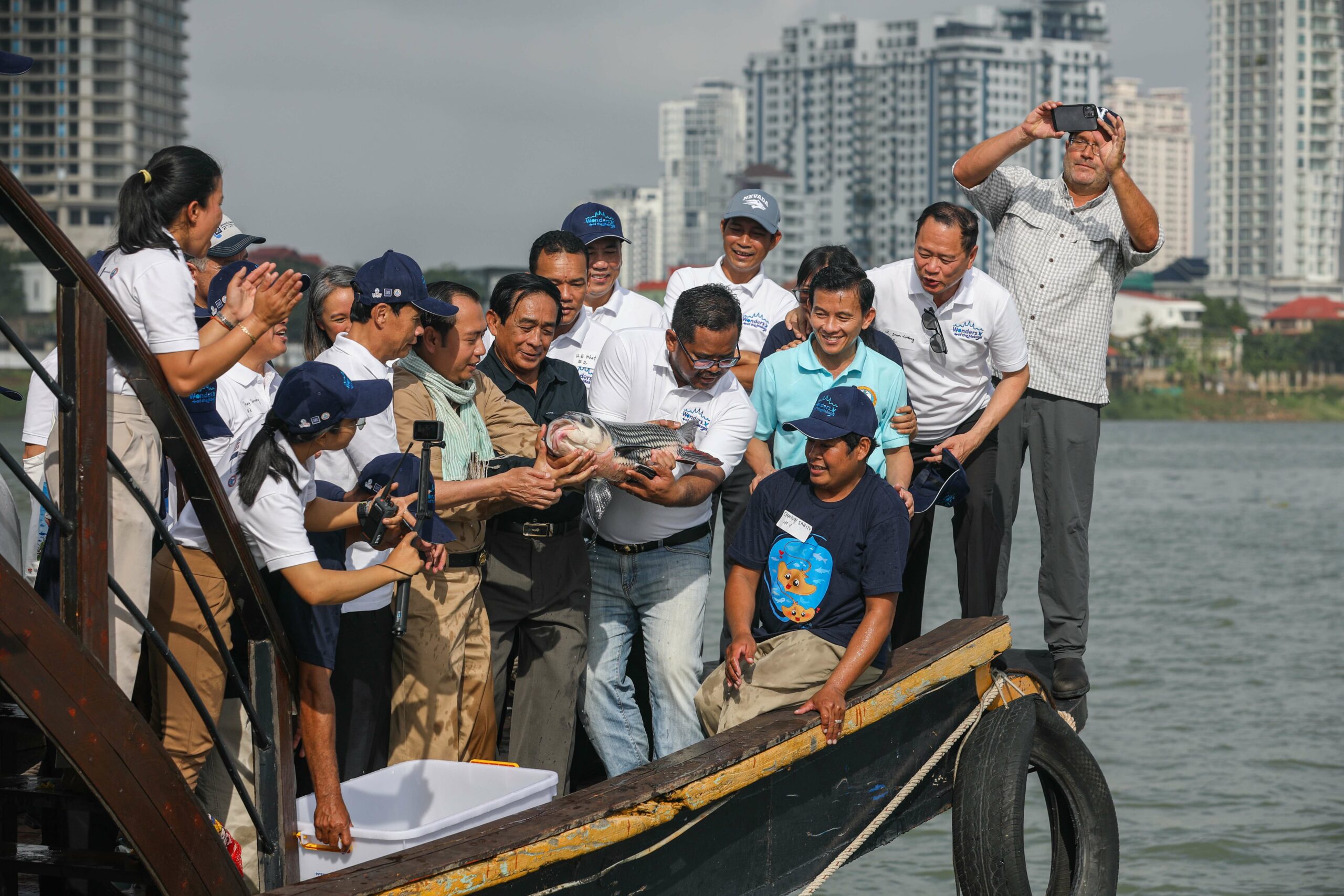
What would you say to a person in Cambodia who is on the fence about picking up your book?
The book starts in the Mekong region and ends in the Mekong region. It starts with the catch and death with, what was at the time, the world’s largest freshwater fish and it ends on a more hopeful note. I would like to think the book mirrors where we are headed in terms of our interest and stewardship of giant freshwater fish.
I do hope that the people who read the book are brought a little bit closer to a freshwater world that we seldom see and don’t appreciate enough.
School bus operators to get additional foreign worker quotas to tackle driver shortage: MOE
SINGAPORE: School bus operators will be provided with additional foreign worker quotas to increase the supply of bus drivers “on a time-limited basis”, announced the Ministry of Education (MOE) on Monday (Jun 12). The recent shortage of drivers and rising cost pressures has made it more challenging for school busContinue Reading
Asiaâs economic heft keeps Russiaâs economy afloat
Thirty-seven countries have imposed economic sanctions on Russia since its invasion of Ukraine in February 2022. The breadth of this campaign has few precedents in recent history.
The sanctions covering finance, energy, technology, travel, shipping, avionics and commodities are aimed at one of the 10 largest world economies.
Yet the economic pressure on Moscow is by no means as hermetic as previous anti-war sanctions campaigns, such as the UN sanctions against Iraq after Saddam Hussein’s 1990 invasion of Kuwait.
One year after their imposition, several things are clear. Sanctions have damaged the Russian economy and its future growth prospects. But they have neither caused its collapse nor helped to end the war in Ukraine.
There’s been a lot of focus on how US dollar dominance facilitates Western financial sanctions. But the mixed results of the economic campaign against Russia demonstrate that a powerful countervailing trend has gone largely unnoticed: the rise of Asian commercial power as a facilitator of trade diversion that blunts Western sanctions.
Modern economic sanctions were created in the early twentieth century at a time of undisputed European mastery of the world economy, a mantle subsequently passed to the United States. This Western economic dominance lay behind the expansion of sanctions during the Cold War period. But the global economic center of gravity has since moved towards the East.
In 2021 Asian economies constituted 39% of global nominal GDP, making them the single largest continental bloc. Asian exports constituted 36% of global exports, while the five largest Asian economies together — China and Hong Kong, Japan, South Korea, Singapore and India — accounted for a quarter of all global imports.
Asia today constitutes three-quarters, and China and India fully half, of global year-on-year GDP growth.
The 2022 sanctions campaign against Russia has exposed the strategic consequences of this shift. Sanctions against Moscow were intended, as one US National Security Council official put it, as a form of economic “shock and awe.” Yet after a brief financial crisis, Russia rerouted much of its trade towards Asian economies and weathered the initial sanctions onslaught.
Asian economies have acted as alternative destinations for Russian exports as well as new sources of imports. Trade links with China, India, Turkey, Gulf states and Central Asian countries have buoyed the Russian economy. Bilateral trade between Russia and China grew 29% in 2022 and 39% in the first quarter of 2023.

It may reach US$237 billion by the end of 2023 — a sum larger than China’s total bilateral trade with economies such as Australia, Germany or Vietnam. In 2022, Russian trade with the United Arab Emirates rose by 68% while trade with Turkey increased by 87%. Russo–Indian trade surged by 205% to US$40 billion.
Export diversion has been a lifesaver for Russian energy sales, which constitute a large share of its trade. In January 2022 European countries imported 1.3 million Russian barrels per day while Asian customers purchased 1.2 million. By January 2023 Russian sales to Europe had dropped below 100,000 barrels per day but exports to Asia had surged to 2.8 million.
Asian demand has more than substituted for the loss of oil exports to Europe. India has become the single largest purchaser of Russian seaborne crude, buying more than 1.4 million barrels per day since the beginning of 2023.
Chinese importers are not far behind, buying between 800,000–1.2 million barrels per day in 2022. In one year, India, China, Turkey and the Gulf states have entirely replaced European demand for Russian oil exports.
Asian exporters have also filled part of the gap left by Western suppliers of advanced manufacturing and high-tech equipment. Chinese firms now account for 40% of new car sales and 70% of smartphone sales in Russia.
The withdrawal of Western foreign direct investment has severely impacted the domestic car industry. Russia has shifted to importing used European and Japanese cars through third countries, with new cars mainly coming from China.
China and Hong Kong have become key suppliers of microchips, which Russia began to stockpile before the war. In 2022, Russian companies shifted to importing more advanced chips, with the value of semiconductor and electronic circuit imports rising by 36% between January and September compared to 2021.
It remains to be seen how effective these import channels will be in the long run. But in the short run, Western export controls on technology have not created a chip famine in Russia.
Russia’s trading partners in the Eurasian Economic Union have also played a role in bypassing technology export restrictions. Central Asian economies are active as conduits of parallel imports and transit trade.
The European Bank for Reconstruction and Development concluded that while Russian trade with the United States, United Kingdom and European Union has dropped significantly, “EU [and] UK exports to Armenia, Kazakhstan and Kyrgyzstan… increased markedly in a pattern consistent with [the] rerouting of trade to Russia.”
This rerouting effect through Central Asia is noticeable in imports of machines and chemical products. By October 2022 year-on-year increase in exports to Russia from China, Belarus, Turkey, Kazakhstan, Kyrgyzstan and Armenia nearly equaled the fall in European, US and UK exports to Russia.

By acting as ersatz suppliers to the Russian economy, as substantial new customers for its commodity sales, and as price-setters for Russian oil exports on global markets, Asian economies have considerably reduced the impact of Western sanctions.
While the sanctions have lowered Russia’s growth potential, its economy has been sustained by a major trade realignment. The participation of Japan, South Korea, Taiwan and Singapore in financial and technology sanctions has had little effect, partly because commercial ties between these East Asian states and Russia continue in manufacturing and energy trade.
Asia’s sanctions-blunting commercial power, therefore, rests primarily with China and India and several Middle Eastern and Central Asian economies. These geo-economic realities seem bound to complicate the future Western use of sanctions.
Nicholas Mulder is Assistant Professor of History and Milstein Faculty Fellow at Cornell University. He is the author of The Economic Weapon: The Rise of Sanctions as a Tool of Modern War (2022).
This article was originally published by East Asia Forum and is republished under a Creative Commons license.
School bus operators may hire more foreigners to ease driver shortage: MOE

SINGAPORE: Selected school bus operators will be allowed to hire more foreign drivers to ease the manpower crunch that has forced some companies to terminate their contracts.
This was among the measures announced by the Ministry of Education (MOE) on Monday (Jun 12) to address issues faced by school bus operators.
They can submit their applications to MOE to request a higher foreign worker quota for school bus drivers on a “time-limited basis”.
“We will work closely with operators to phase in more foreign workers based on their needs, taking into consideration the extent of their participation in serving our schools, as well as their demonstrated continued efforts to actively recruit local school bus drivers,” the ministry said in a media release.
The school bus contract template will also be revised to allow operators to submit two sets of bus fares for both the initial contract and option periods. This would allow them to take expected cost increases into account, instead of being contractually bound to the same fares for the whole contract period.
Schools select school bus operators through a competitive bidding process using a contract template provided by MOE.
A typical school bus operator contract lasts four years, with a two-year initial contract period and an option period of another two years.
The revised template will take effect for new contracts awarded to operators for their services from 2024, said MOE.
The ministry noted that the recent shortage of drivers and rising cost pressures have made it more challenging for school bus operators to sustain their operations.
It said it received “persistent feedback” in the past year from operators about losing their school bus drivers and the difficulties in recruiting local drivers.
“To ensure the viability of the school bus sector, the Ministry of Education has engaged bus associations and operators on measures to alleviate their operational constraints,” it added.

